10 Iconic Floral Still Lifes You Need to Know
Flowers have long been a central theme in still-life painting. Each flower carries its own symbolism. For example, they can represent innocence,...
Errika Gerakiti 6 February 2025
In the Northern Hemisphere, we will soon reach the height of summer. The time between 3 July and 11 August is also known as “the dog days.” And it is not because our four-legged friends are the ones who suffer most in the heat. The name actually comes from the star Sirius, known colloquially as the Dog Star, which rises just before this time of year. It played an important role in the Egyptian calendar, and Hellenic astrology connected this period with heat, drought, sudden thunderstorms, lethargy, fever, mad dogs, and bad luck. The beach may be the best place to avoid all those bad things and also to cool down in the glorious sea. Let’s see what art can teach us about going to the beach and making the best of the dog days before Florence and the Machine tell us they’re over!
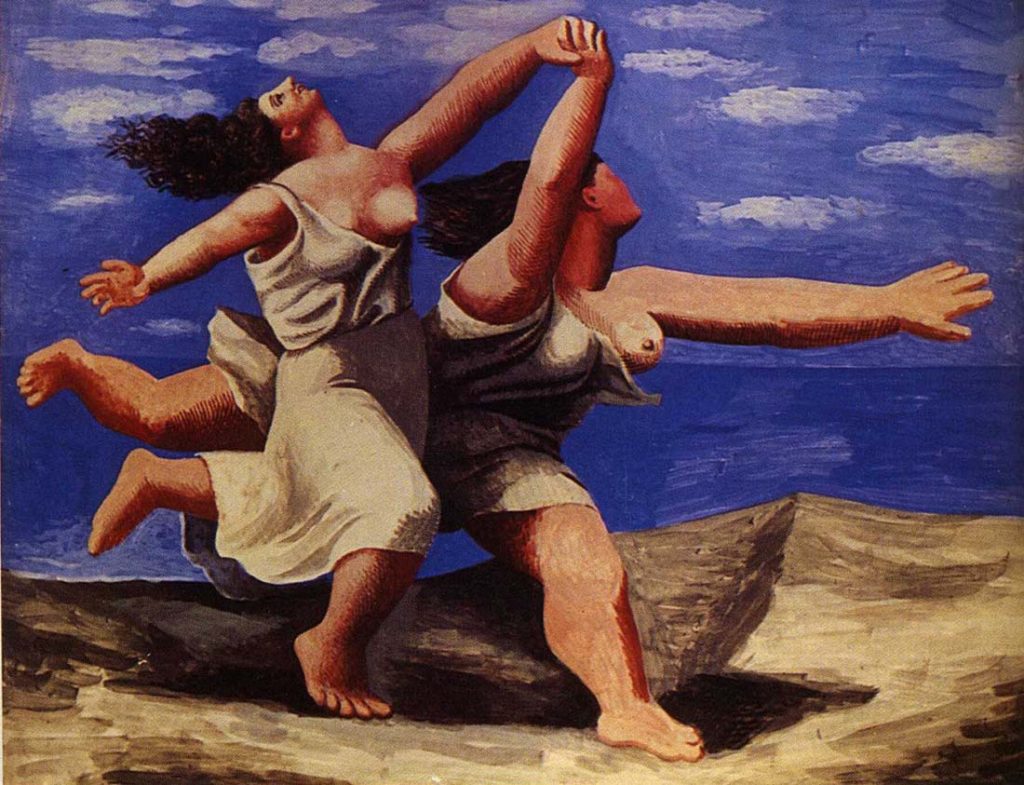
If I had the chance to go to the beach now, this is probably what it would look like. And this is just the first of our 10 beaches in art. Pablo Picasso painted this small gouache panel in 1922 during his “Neoclassical period.” This period in his career started after he visited Italy in 1917. We may call it the Neoclassical period, but Picasso, as always, does not blindly conform, as women are far from classical beauties. They may be wearing classical dresses, but they are falling out of them. The key here is their energy and the joy of movement. They may be compared to maenads, the worshippers of Dionysus.
Interestingly, despite the original panel being small, it has been also used in an oversized version as the curtain of Le Train Bleu. This was a new ballet, with a chic and amusing storyline by Jean Cocteau, scenery by Laurens, costumes by Coco Chanel, and music by Milhaud, and it was first performed by Diaghilev’s Ballets Russes at the Theatre des Champs-Elysees on the 20 of June 1924. Not surprisingly, the theme was gaming on the beach.
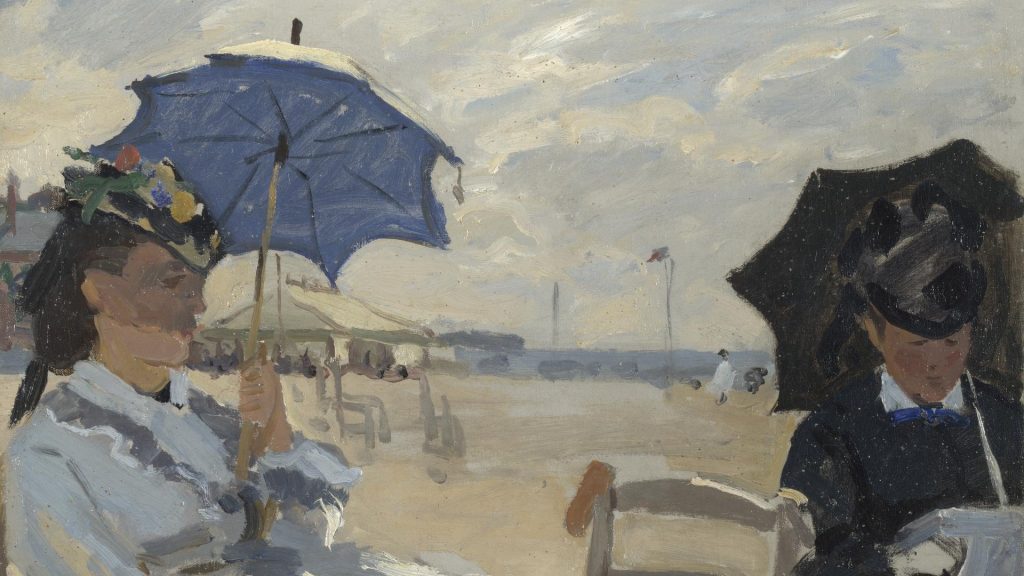
There is of course another way to go to the beach – in style. With umbrellas and proper chairs, keeping the sense of decorum. Claude Monet painted here his wife Camille with a friend, Madame Boudin, the wife of his mentor Eugene Boudin. There are grains of sand stuck to the paintwork, which means the painting was at least partially done on the spot. The framing here is very interesting, closer to what we’d expect from photography than a painting, with the view of the beach framed by the two women.
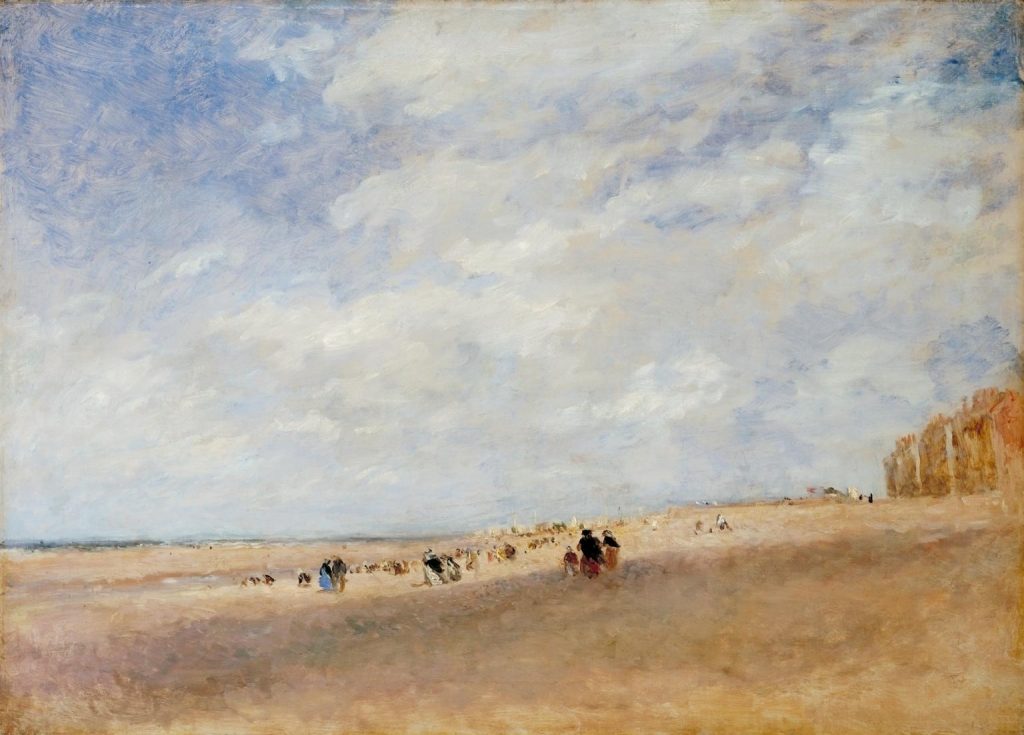
What we often look for at the beach is space. People a bit further away from us and the amazing freedom of the vast sand, sea, and even vaster sky. The ability to breathe in deeply. David Cox painted a series of oils showing the beach at Rhyl in 1854 when he was 71. Three of those paintings survived. Cox primarily painted with watercolors, so this move to oil quite late in his career was a bold one. Nonetheless, he shows full mastery of the medium, evoking space and light with ease.
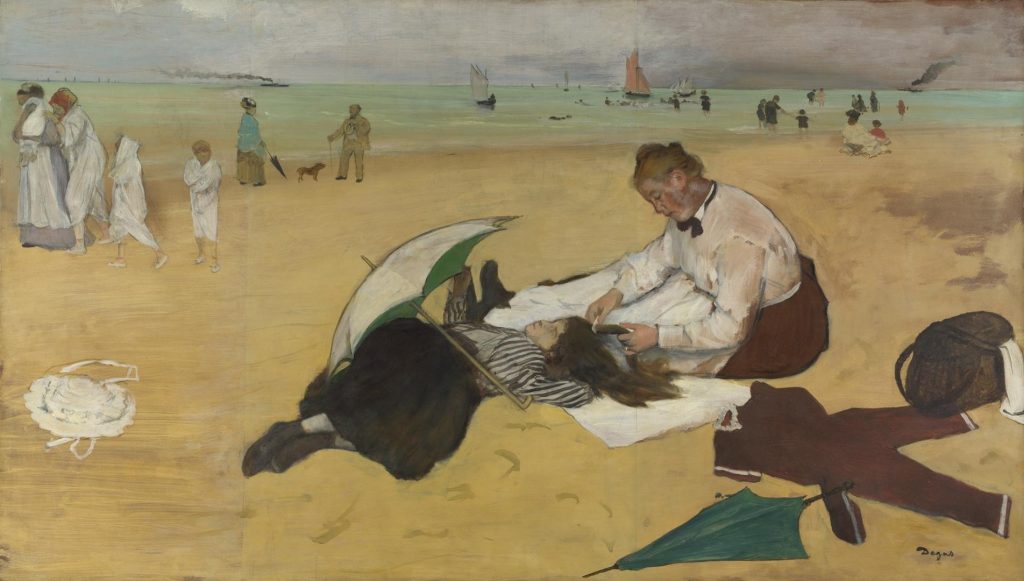
This is the glorious moment on the beach when after the exertion of swimming and jumping through the waves we can lie down and relax. Not all of us may have a maid to brush our hair, but we can all enjoy the warm sand. To the right of the blanket, you can see the bathing suit stretched to dry. Edgar Degas was a great admirer of Japanese prints and adopted many aspects of their composition as well as their subject matter. The motif of a woman combing her hair or having it combed, which features in many Japanese prints, became part of his repertoire.
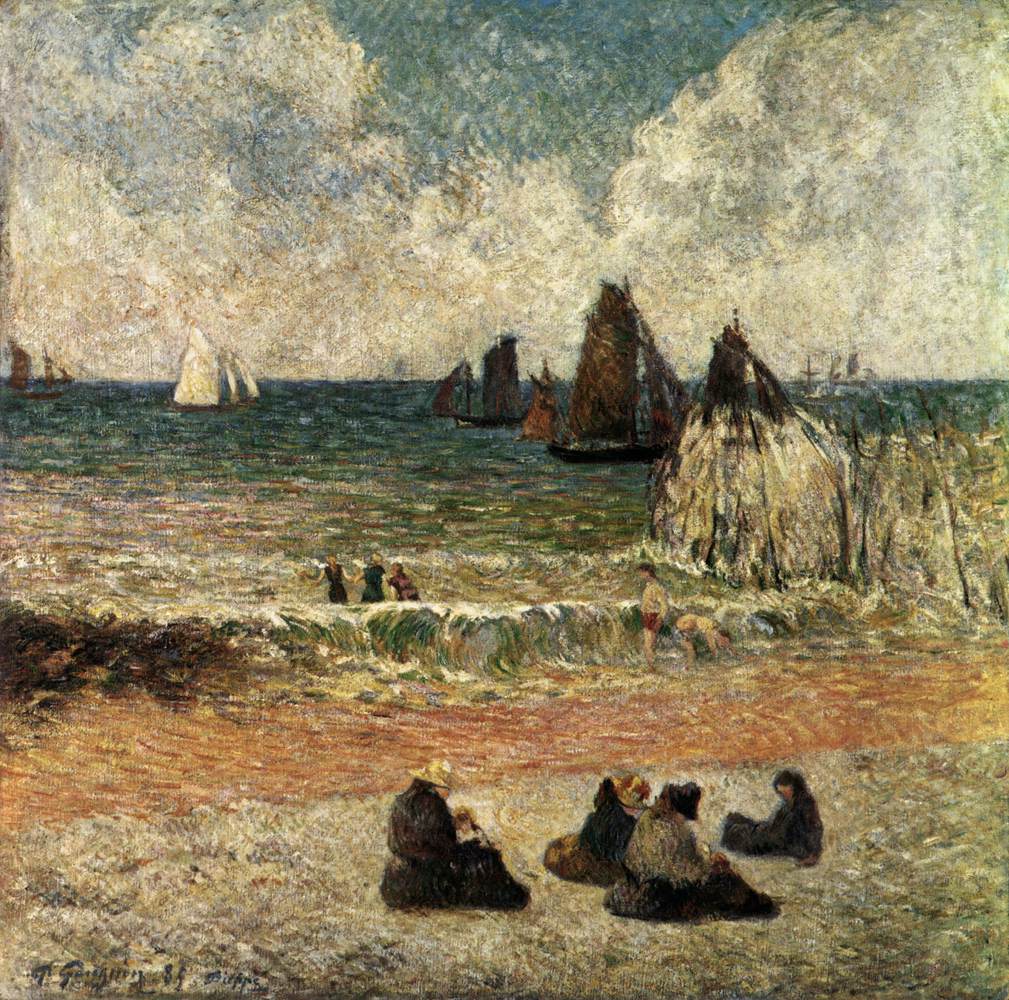
It is a surprise in art terms; I’m sure that when you saw Paul Gauguin’s name and thought about our topic, you expected one of his Tahiti paintings. Instead, here we have the beach at Dieppe, from the early stage of Gauguin’s career. In 1873, he married Mette-Sophie Gad and in 1884 moved with her and the family to Copenhagen. There, he tried to make a career as a tarpaulin merchant, but with little success. By 1885 he returned to Paris, asked by his wife and her family to leave, due to what you may call irreconcilable differences. You can see here a group of women in dark dresses and hats, sitting with their backs toward the wind. But there is also a group of children braving the waves of the English Channel, despite the obviously chilly weather.

It’s so much more than just a beach. Henri Matisse tried to pack in all the joys of life into this monumental painting. We have dancers on the beach, people lazily laying down and relaxing, making music, and making love. The curvaceous lines of women’s bodies are repeated in the arabesque lines of the tree trunks and branches, giving everything an aura of languor. The colors evoke warmth and happiness; it is a place of pleasure, but also safety. And there in the center, we have the joyous dancers on the beach.
The painting’s composition brings to mind The Bathers by Paul Cézanne, completed shortly before. It is a dialogue, as we have two very different takes on the same topic. It was bought by Gertrude Stein, in whose famous weekly salon, where Matisse, Apollinaire, the young and largely unknown Picasso, and other members of the avant-garde came together to exchange ideas.
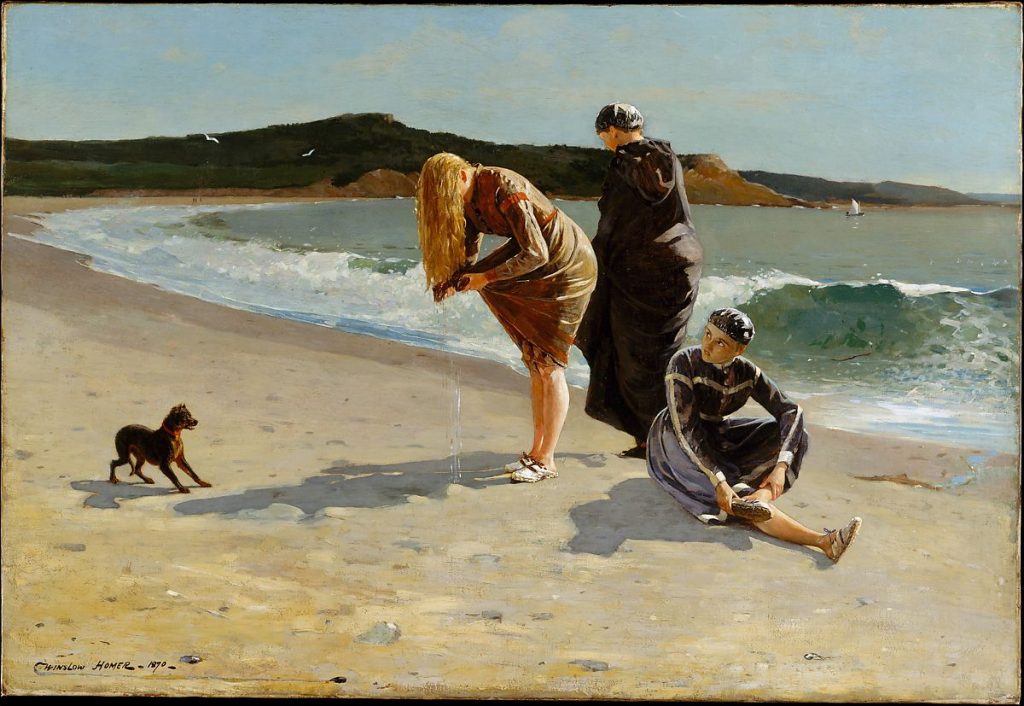
Ok, maybe they are no longer children, but this group of young women went into the water. Two of them came prepared, with their swimming caps on, but the third one must have rushed in on the spur of the moment, or maybe she was pushed in. She is now drying her dress, agitating the dog. The sitting girl looks at her with curiosity and maybe some guilt.
The beach is deserted, so possibly despite the sun, the weather is a bit chilly for swimming. Following his experience as an illustrator during the Civil War, Winslow Homer turned his attention to lighter scenes of contemporary life, often focusing on fashionable young women. This painting of three bathers on a Massachusetts beach was his most daring subject to date. Critics were less disturbed by its disquieting mood than by the fact that, as one observed, the figures were “exceedingly red-legged and ungainly.”
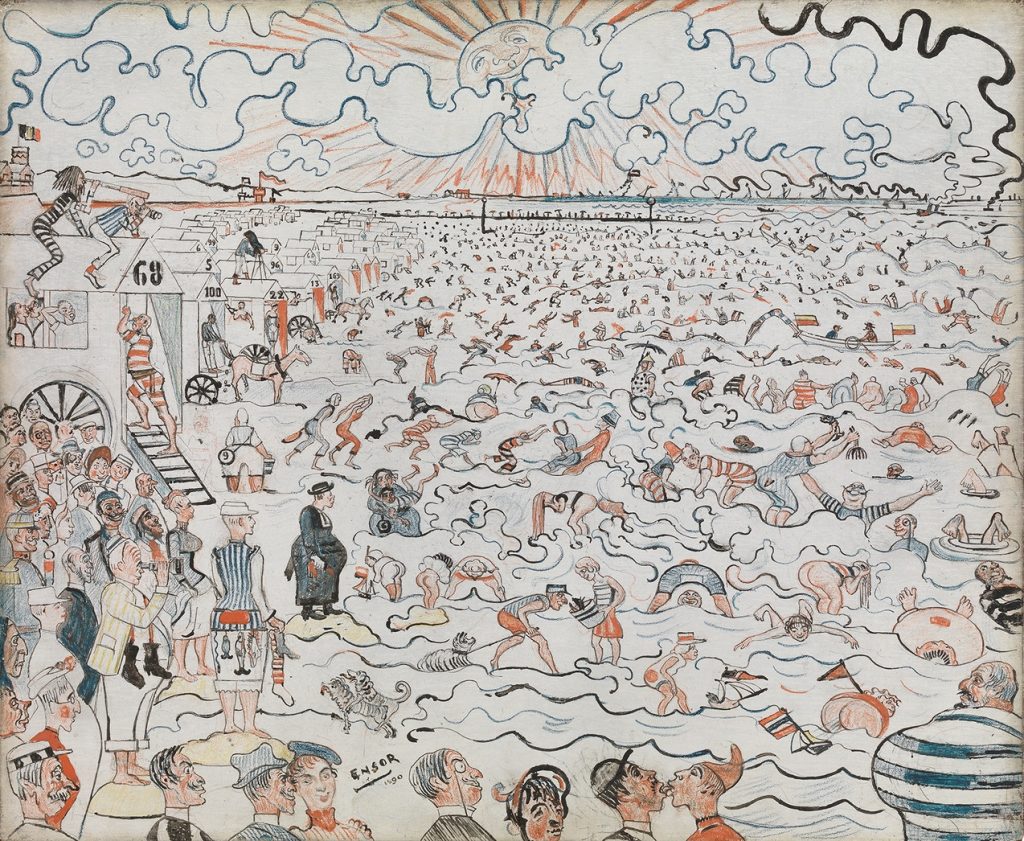
Now let’s go back to how the beach usually looks: crowded. I love the level of detail and satire in this work, with so many different people doing so many different and funny things. It’s almost like a vicious version of Where’s Wally? Look to the bottom right corner, at how one of the kids tries to power the little sailboat, pretty inventive. We have the beach cabins dragged by horses. They are for those who want to keep appearances while bathing. But no one cares, everyone goes freely about their business despite being watched by the crowded audience.
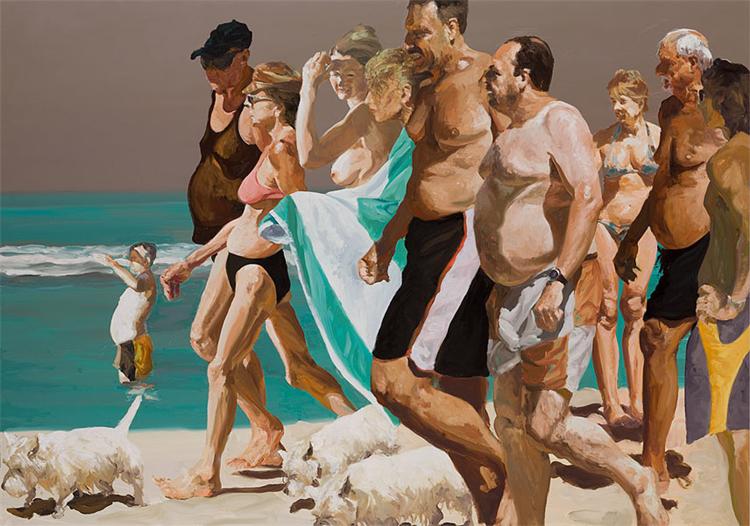
If James Ensor’s piece was already a bit disturbing, our dream of the beach Fischl makes us face reality head-on. Yes, we all had plans for our beach bodies, and yes, nothing came out of it. Rarely is there a perfect body on the beach – and no one cares, in the end, we go there not to show off, but to relax. Eric Fischl is considered the painter of the suburbs, as you can see from this work he is far from sugarcoating. The rhythm of the S-shaped line created by the numerous bellies in this painting is almost soothing, we all have something hanging or bulging in the wrong places.
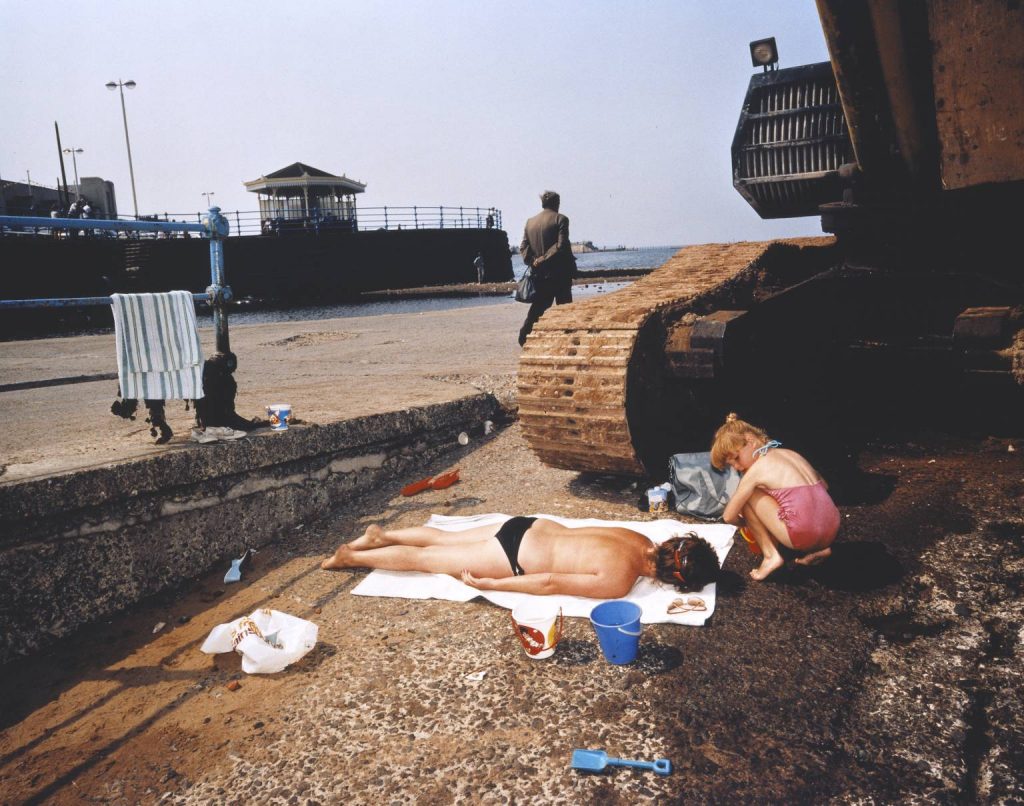
Desperate times call for desperate measures and any space where there is sun can be used as a beach. One just has to use the imagination and construe the hum of the road as the crashing waves, the warm tarmac as the warm sand. This photo comes from The Last Resort, a series of 40 photographs taken by Martin Parr in New Brighton, a beach suburb of Liverpool. The photographs comprising The Last Resort were taken between 1983 and 1985, a period of economic decline in northwest England. They depict a seaside resort past its prime with attractions designed to appeal to an economically depressed working class: overcrowded beaches, video arcades, beauty competitions, tea rooms, and chip shops.
DailyArt Magazine needs your support. Every contribution, however big or small, is very valuable for our future. Thanks to it, we will be able to sustain and grow the Magazine. Thank you for your help!